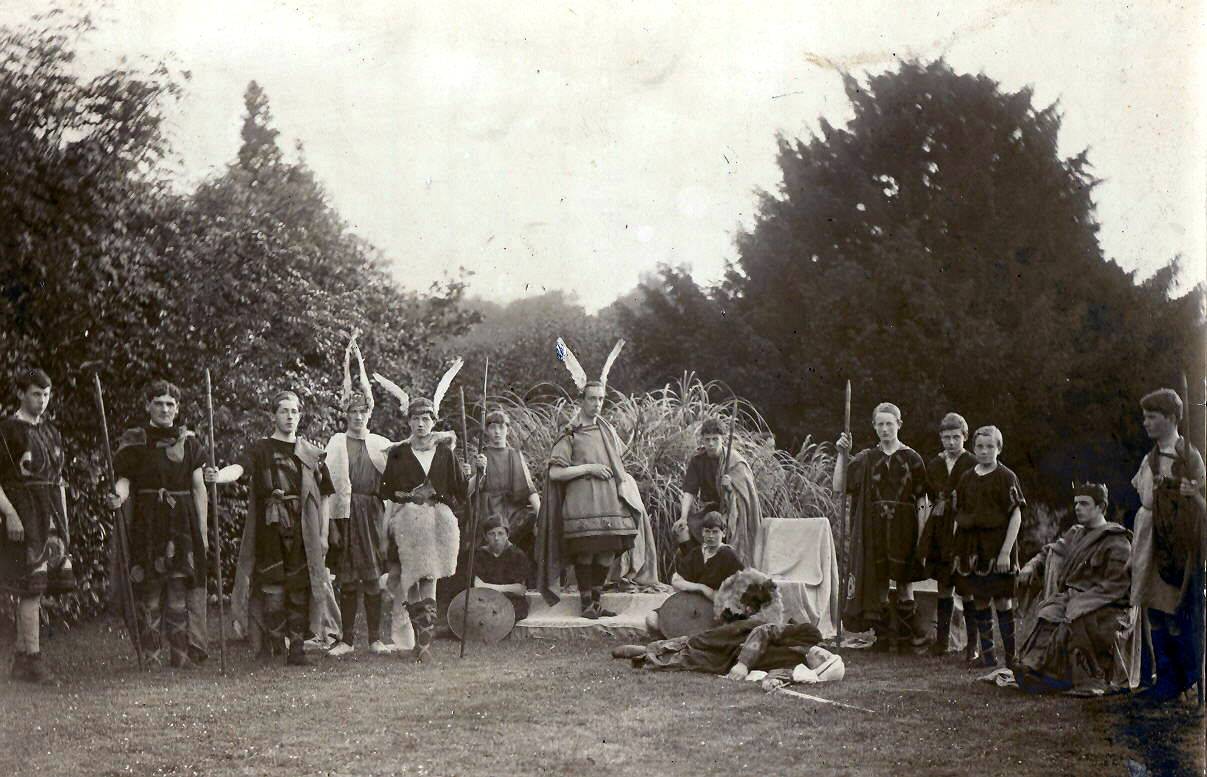A good website is half the battle.
Fionn mac Cumhaill never said that, but fans of the legendary warriors of the Fianna should certainly welcome fionnfolklore.org.
It’s easy to navigate, for one thing. An obvious approach is to click on “Stories and Songs” on the homepage, which brings the visitor to a magnificent list of titles.
Let’s take “Ainm Oscair (Oscar’s Name),” which is more precisely about how Oscar got his name. The entry outlines the summary of the legend, and then lists 10 sources. One, for example, was an interview by John Francis Campbell of Eachan Mac Iosaig on Sept. 30, 1871, which is in the John Francis Campbell Collection at the National Library of Scotland. But it was also collected by Duncan Kennedy a full century earlier and that account is in the same library. Fionn Folklore Database reports that “Ainm Oscair” versions came from Cape Breton and Argyllshire.
It’s interesting to see the range of places that an individual story or song was found in the Gaelic world or its diasporas. “Conn mac an Deirg (Conn son of the Red One)” was collected from various Scottish locations, for example, and also in Galway in Ireland.
“An Lámh Anuas an Simné (The Hand Down the Chimney)” has been collected in several counties in Ireland, as well as from places in Scotland. It generally begins with a plea for aid from a messenger who “relays that the King of England (in some tellings he appears as the King of France, or a generic king) urgently wants Fionn to travel over to him.”
Here’s a full summary of another story, “An Ridire gan Gháire (The Knight without a Laugh),” from Fionn Folklore Database, which is jointly funded by Harvard University and the Government of Ireland’s Emigrant Support Programme
“This episode appears in multiple tales of the Fianna. Oscar visits a knight to find out how he lost his laughter,” it begins. “He relays how one day, he and his three sons saw a hare (or deer) running outside their home. They pursued it to a fairy fort and then followed it inside. There they found an old man, who goaded them to stay for a feast. During the course of the meal, his three sons were killed by the fairies in attendance. The knight fled with a threat from the fairies not to return. Every year on the anniversary of their death, the hare returns to taunt the knight. He says that this incident is what resulted in him losing his laughter. Upon hearing the story, Oscar makes the decision to follow the hare on the next anniversary, and he forces the knight to accompany him. In the same manner, they are invited to stay in the fairy fort for a feast. Oscar overpowers the fairies, whereupon they return the knight’s three sons who had been turned into stools (or statues in some tellings). The knight and his sons then return home, his laughter restored.”
Fionn Folklore Database adds, “Collected in Counties Cork, Donegal, Galway, Kerry, Limerick, Mayo, Waterford in Ireland; Philadelphia, Pennsylvania in the United States; and Tiree in Scotland.”
“Baisteadh Oisín (Oisín’s Baptism)” has been collected in no less than 13 Irish counties as well as Argyllshire. “This tale describes Oisín’s baptism by St. Patrick,” the summary goes. “While Patrick is baptizing him, he unknowingly rests his staff on Oisín’s foot, which begins to bleed from the pressure. When Patrick asks him why he did not say anything, he replies that he thought it was part of the baptismal process.”
In its recent launch statement, Fionn Folklore Database said it “aims to connect people around the world with approximately 3,500 orally-collected stories and songs about the greatest heroes of the Gaelic world.”
It added, “the great extent of the corpus was entirely unknown, even among the scholarly community.”
It said the website “shines new light on the vast array of tales about the Fianna, and on the talented storytellers and collectors who preserved them from the 18th century to the present day.”
The project has been described as the “brainchild” of its director, Dr. Natasha Sumner, who is based in the department of Celtic Languages and Literature at Harvard. “After nearly a decade of cataloguing and development, it is exciting to finally welcome visitors to the site,” she said.
Meantime, Sumner’s colleague, the project researcher Dr. Pádraig Fhia Ó Mathúna, is offering workshops in universities and local cultural centres across Ireland and the United States in the coming months. “The site’s stories and information provide a fascinating resource not only for researchers,” he said, “but also writers, teachers, storytellers, singers, and the general public.”
For more information about Fionn Folklore Database, visit https://fionnfolklore.org/ or get in touch on social media (@fionnfolklore) or by email (fionnfolklore@fas.harvard.edu).








